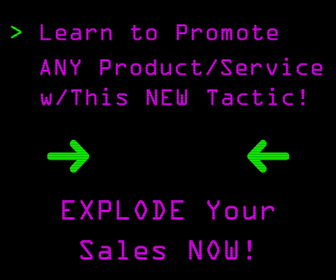Struggling to make any money from your mailing list?
You're not alone.
You spend hours trying to craft the perfect messages, only to get lackluster click through rates and hardly any sales at all.
It's just not working.
This usually comes down to a copywriting issue, specifically a matter of your strategy.
There's a question you need to ask yourself if your emails aren't converting…
Who am I talking to when I write these emails?
If you don't have a clear-cut answer to that question, that could very well be the problem.
There's a reason why it's so common to write sales emails and newsletters in second person, and to use a person's first name in the subject line when possible.
It's because emails convert a lot better if it genuinely feels like you're talking to the reader one on one. Otherwise, there's a sense of connection that's missing, and it affects whether someone is inclined to trust your brand.
You should write as if you're talking to someone.
But whom?
In a recent blog post, GetResponse explains how to find your “one reader,” toward whom your copywriting should always be tailored.
One reader
“Find one person in the crowd and deliver your speech to them.”
If you’ve ever done public speaking, you’ll recognize that advice. Instead of looking into a sea of strange faces, pick one friendly face and act like you’re talking just to them.
Instantly, you’re friendly and likeable. And your speech is memorable.
This trick works beautifully in email copywriting.
Write to one specific reader that you know, like, and respect.
Suddenly, you’re writing to one person instead of a faceless crowd. You know exactly what to say, what jokes to trot out, if they’ll understand the sarcasm in paragraph 3, and what call to action motivates them.
In short, writing to one reader makes your job in writing the email so much easier.
Being specific brings conversions, which is why 92% of B2B enterprise marketers tailor their content in at least one way, according to the Content Marketing Institute.
How to write to your one reader:
- Be specific in your examples
- Use testimonials from people like them
- Tell stories of real-life outcomes they can relate to
- Use a tone and voice in your email that they appreciate & understand
Suddenly, your reader sees themselves on the page. It feels like you’re in their head. Like you understand them, making them desire what you’re offering.
How to get to know your one reader:
- Customer surveys
- Onsite surveys
- Compare results from both of those surveys to find overlaps and common themes
- Ask your newest customers who referred them
- Send a one-question email to your customers, asking to rate you on a scale of 1-5 stars
You can read about more important factors that can boost your email marketing ROI in the full blog post from GetResponse.
CHALLENGE Yourself to Profit!
Free Download: Build Your Profit-Generating Online Business With This Free Blueprint
Sign Up, follow the easy steps and You'll get the tactics, strategies & techniques needed to create your online profit stream. It's free!



